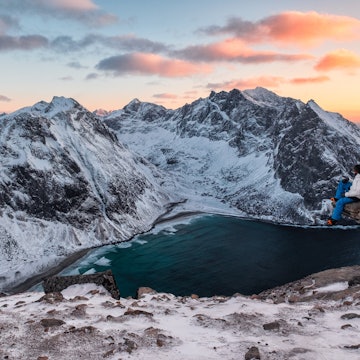

A humpback whale breaches in Skjálfandi Bay, North Iceland. This acrobatic species is one of the most commonly sighted whales / Egill Bjarnason / Lonely Planet
When humans first arrived some 1100 years ago, Iceland seemed desolate: a layover for migrating birds, roamed only by the Arctic fox, the sole native land mammal. But expand the horizon through the wild hills, cliffs and glaciers to the ocean and offshore islands, and a visit to Iceland can tick some serious wildlife-spotting boxes.
Whatever you see, as you head across fjords and into the North Atlantic in search of everything from tiny puffins to Earth’s largest animal, you’ll have a tale to tell. Here, we look at Iceland’s best places for wildlife watching.
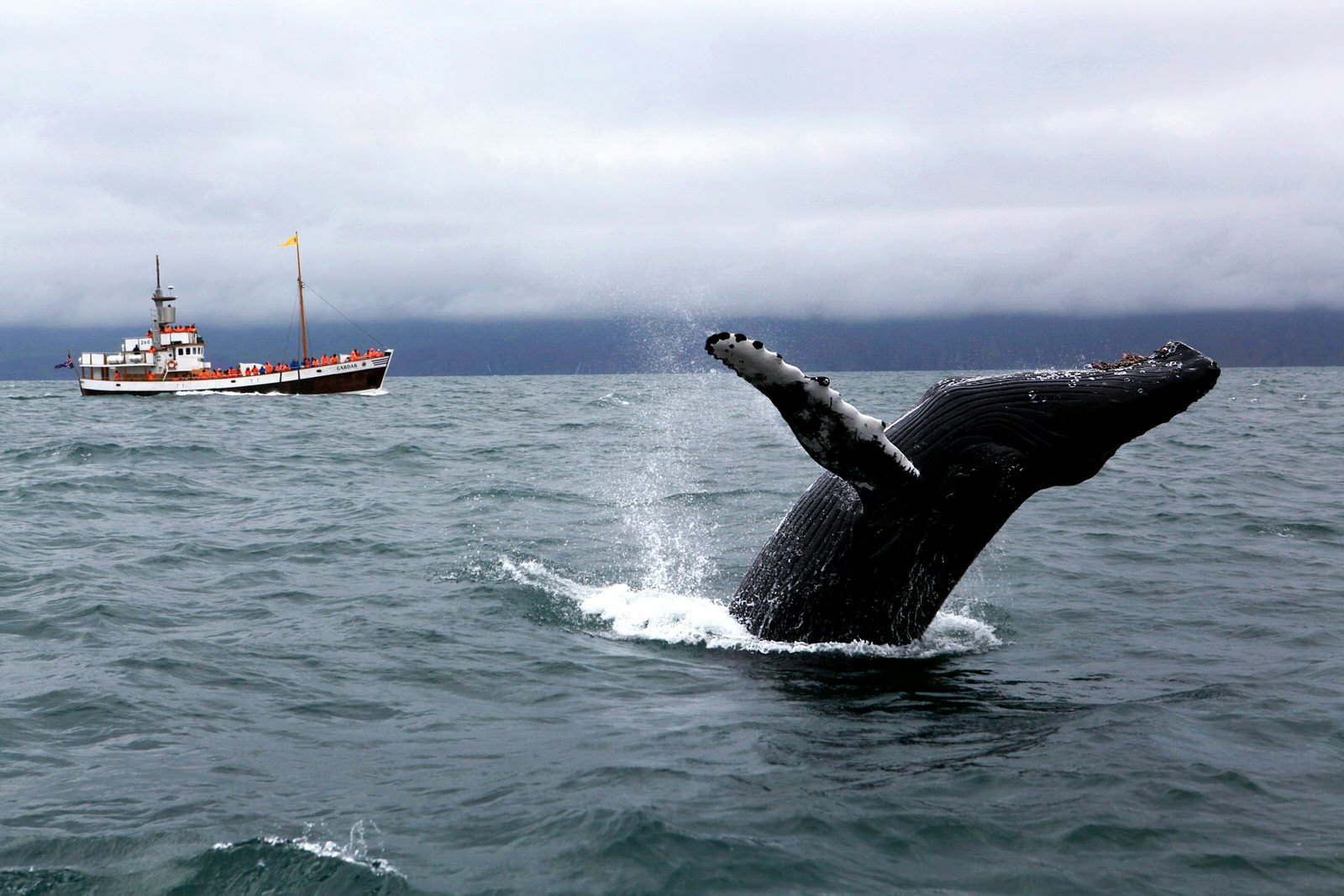
Ocean giants: humpbacks and blue whales
The northeastern village of Húsavík, overlooking stunning Skjálfandi Bay, claims – without much debate – to be the whale-watching capital of Iceland. Over summer, when the whales are feeding, boats sail out roughly hourly.
The acrobatic humpbacks are the stars of most tours, with schools of white-beaked dolphins and minke whales also spotted fairly regularly. The lucky may get to see the blue whale – guides report seeing the great creatures, ‘with a heart,’ they’ll tell you, ‘larger than a Volkswagen’, on around 1 in 10 trips. The Húsavík Whale Museum now hosts a 25m-long skeleton from a blue whale that was stranded on a beach in North Iceland in 2010.

The three available tour operators in Húsavík – Gentle Giants, North Sailing and Salka – run nearly identical tours: 3 hours on a renovated oak boat, with the guide serving hot chocolate and a pastry after what is most often a successful tour. A trip with North Sailing’s newest boat, The Andvari, powered by electricity, takes the experience to another level, as much about hearing as seeing; the sound from the whale’s blowhole bursts without interruption from a diesel engine.
The alternative to Skjálfandi Bay is neighboring Eyjafjörður, which is visited by tour boats from Akureyri, Hjalteyri and Dalvík. Comparing the two locations ultimately depends on weather. The long and narrow fjord – Iceland’s longest – offers a smoother sail when gales hit northern Iceland. On the other hand, blue and fin whales, the largest baleen whales, only venture into wide and open bays such as Skjálfandi, not narrow fjords like Eyjafjörður.
You can also see humpbacks and minke whales in Reykjavík’s Faxi Bay, which is convenient for visitors on a short trip, but sightings are less frequent.

Orcas in West Iceland
Orcas (killer whales) are world’s most widely distributed mammal, alongside humans and rats, and the waters around Iceland host unusually high numbers of this powerful predator. Unlike the other whales of Iceland, the best time to see them is winter. In West Iceland’s Snæfellsnes Peninsula, pods of orcas chase herring into creeks and fjords – you might even spot them from shore.
From November to March, the tour boat Láki II departs daily from Grundarfjörður. Keep in mind that standing on the bow in the midst of winter results in a similar cold exposure to being at the top of a mountain. The crew provides warm overalls, before heading out, but layer appropriately.
A similar feeding frenzy can also occur elsewhere in Iceland and towards spring, when sightings off Snæfellsnes can’t be guaranteed, it may be worth asking around for other good spots.

Puffins, terns and plover on love island
For the Atlantic Puffin, Iceland is one big love island. Every summer, millions move into their sea-side burrow to do a little dance, make a little love – and pose for a gazillion pictures. But while the vibrant puffin colonies were once evenly spread around Iceland, in recent years a diminishing supply of sand eels off the southern coast has drawn a sharp contrast between the thriving populations of the north and Westfjords and struggling colonies in the south.
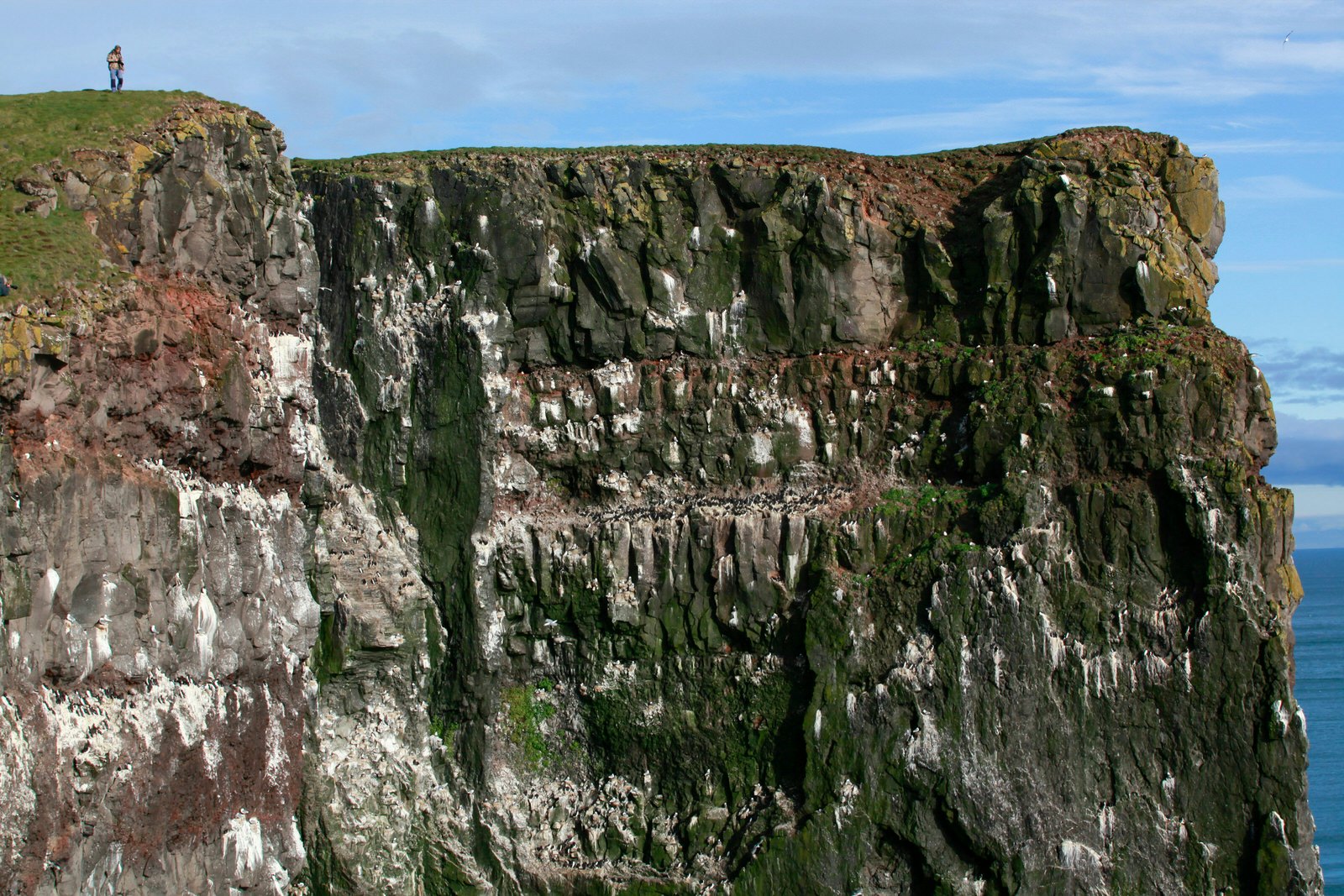
Látrabjarg Peninsula in the Westfjords is one of Europe’s largest bird cliffs, and a top place to watch puffins, razorbills and other seabirds. The best sights are at the tip of the peninsula, a 50km drive down a gravel road, accessible by small vehicles, where tame, stoic puffins rest on cliffs up to 440m high. The cliffs stretch for about 14km total, with trails for excellent day hikes.
Most puffin encounters require a boat trip. The dome-shaped island of Drangey in Skagafjörður is one example. In The Sagas of the Icelanders a man named Grettir ‘the Strong’ Ásmundsson returned from self-imposed exile on the island by swimming more than 7km to shore. The modern way to get there is with Drangey Tours, involving a boat trip and a guided hike up the steep cliff-face.
In total, Iceland has around 75 nesting birds and, over summer, the Arctic tern, golden plover, common snipe and oystercatcher are common. Keen birdwatchers head to Lake Mývatn.

Following the Arctic fox to the Westfjords
Approximately 8000 Arctic Foxes live in Iceland. That’s 8000 too many, if you ask many farmers: they have been at war since the time of settlement, and fox hunting is allegedly Iceland’s oldest paid activity.
The foxes living in remote Hornstrandir seem oblivious to the fact that almost everywhere else humans hunt them: some even approach to people, eating from the palm of their hand.
Unless you make it to Hornstrandir, which is only accessible by boat, you’re unlikely to see the foxes (whose coat may be dark or white depending on the season) outside man-made shelters. The Arctic Fox Center in Súðavík raises orphaned cubs next to the exhibition centre (at the time of writing, it had two). And at the Slakki petting zoo in South Iceland, located close to Skálholt, is a brown fox named Rebbi.

Sheep, horses and reindeer
The first settlers arrived with shiploads of livestock and, almost since then, sheep have outnumbered people. After the annual lambing season around 800,000 sheep run wild through the Icelandic summer – too wild, some car drivers might say – until rounded up again in September for shelter and slaughter.
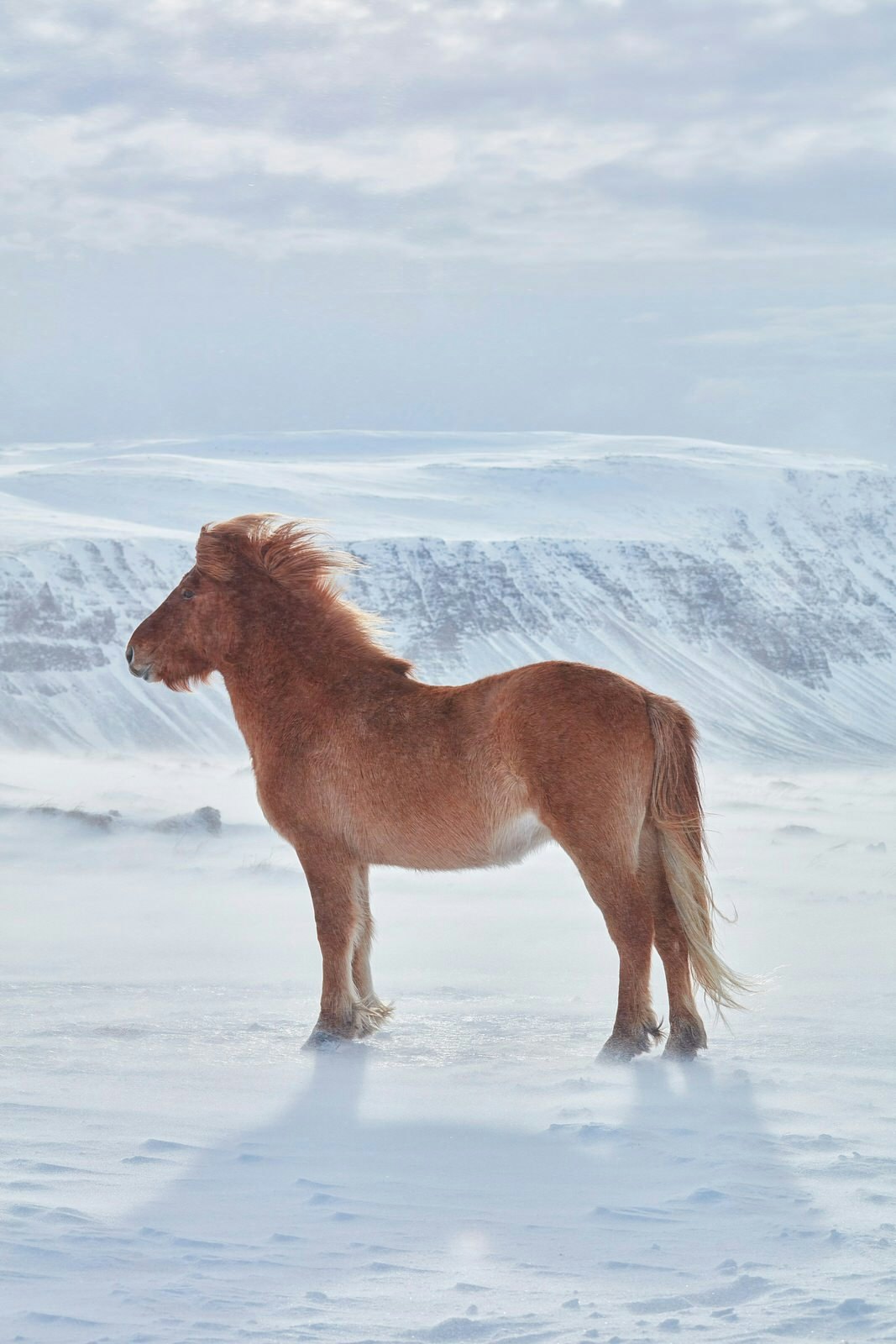
The second most common sight is the famously small and nimble Icelandic horse. Kept within fenced fields, it’s important not to feed or pet them without an owner’s permission: if you want to get close to these unique animals, tour companies around the country offer horse riding. Whatever the experience, absolutely do not — never, ever — call them ponies!
Originally imported from Norway around 1775, reindeers are exclusive to East Iceland. A population of roughly 6000 animals runs wild, and herds can sometimes be spotted from the Ring Road between Djúpivogur and Egilsstaðir.
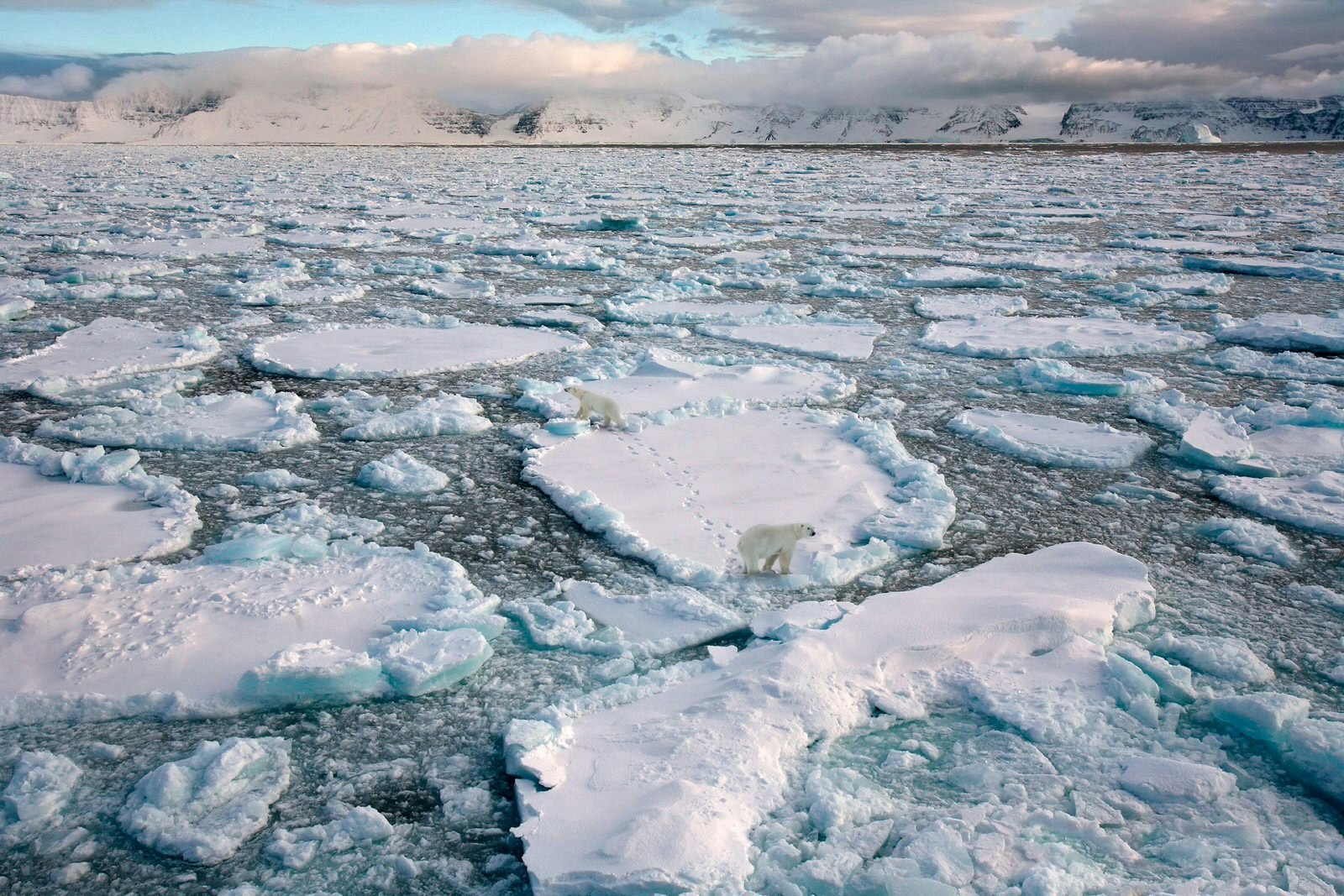
Polar bears, walruses and a changing climate
Due to recent changes in the ocean’s food-web, Icelandic wildlife is in a flux, with climate change and other environmental stresses the most likely explanation.
Ten years ago, for example, whale-watching guides hardly reported seeing humpback whales; tours were dominated by their relative, the minke whale, which now largely keeps to the sea north of Iceland. Across southern Iceland, meanwhile, large numbers of puffins are abandoning their burrows.
While the trend has been towards migrating further north, peculiar things have travelled the other way, too. Since 2008, five polar bears have travelled from northeastern Greenland to North Iceland and the Westfjords, all but one over summer, when the lack of sea ice pushes bears to leave their usual territory in search of food. The government policy is to kill them, claiming they are weak and aggressive after swimming hundreds of kilometres.
In 2013, a live walrus greeted tourists walking the black beach at the Jökulsárlón glacial lagoon. According to reports, the walrus enjoyed the sun for a day before heading out to sea again. Walruses have typically been spotted every 2-3 years, and in 2015 one was seen swimming by Látrabjarg peninsula.
Meanwhile, over by the lake in Egilsstaðir, the notorious Lagarfljót Worm has yet to make an undisputed appearance. But locals say, in this climate, it’s only a matter of time…
















